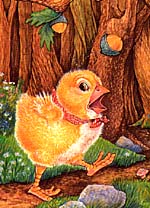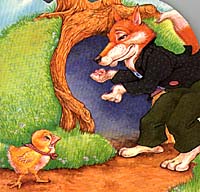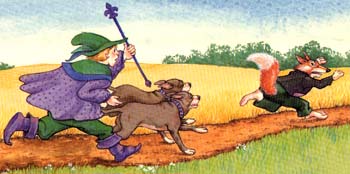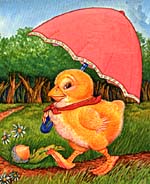Skip to comments.
Arctic Ocean Getting Warm; Seals Vanish and Icebergs Melt(IT’S “ DEJA VU ALL OVER AGAIN”-1922)
Watts Up With That ^
| March 16, 2008
| Anthony
Posted on 03/17/2008 2:36:56 PM PDT by Conservative Vermont Vet
The Arctic ocean is warming up, icebergs are growing scarcer and in some places the seals are finding the water too hot, according to a report to the Commerce Department yesterday from Consul Ifft, at Bergen, Norway.
Reports from fishermen, seal hunters and explorers, he declared, all point to a radical change in climate conditions and hitherto unheard-of temperatures in the Arctic zone.
Washington Post: November 2, 1922
TOPICS: Culture/Society; News/Current Events
KEYWORDS: 1922; global; globalwarming; hoax; warming
(SORRY ABOUT DOUBLE POST BUT THERE WAS SOME ERROR)
The Washington Post, Nov. 2, 1922:
HEADLINE:
Arctic Ocean Getting Warm; Seals Vanish and Icebergs Melt.
The Arctic ocean is warming up, icebergs are growing scarcer and in some places the seals are finding the water too hot, according to a report to the Commerce Department yesterday from Consul Ifft, at Bergen, Norway.
Reports from fishermen, seal hunters and explorers, he declared, all point to a radical change in climate conditions and hitherto unheard-of temperatures in the Arctic zone.
Exploration expeditions report that scarcely any ice has been met with as far north as 81 degrees 29 minutes. Soundings to a depth of 3,100 meters showed the gulf stream still very warm.
Great masses of ice have been replaced by moraines of earth and stones, the report continued, while at many points well known glaciers have entirely disappeared. Very few seals and no white fish are found in the eastern Arctic, while vast shoals of herring and smelts, which have never before ventured so far north, are being encountered in the old seal fishing grounds.
What’s that old saw?: “Plus ca change, plus c'est la meme chose “ (“The more things change………….
I thought considering the topic and today being the day where everyone (except Moozies and Moonbats) is—in fact, or at least in spirit—Irish, I chose a corresponding color for the following:
Chicken Little and "Echochondriacs"

One day Chicken Little was walking in the woods when -- KERPLUNK -- an Enviro-Nut fell on her head
"Oh my goodness!" said Chicken Little. "The sky is falling! I must go and tell President Bush."
On her way to the White House, Chicken Little met Nervous Nelly.
Nervous Nelly said that she was going into the woods to hunt for worms.
"Oh no, don't go!" said Chicken Little. "I was there and the sky fell on my head! Come with me to tell President Bush."
So Nervous Nelly joined Chicken Little and they went along and went along as fast as they could.
Soon they met Crotchety Bobby, who said, "I'm going to the woods to hunt for seeds."
"Oh no, don't go!" said Nervous Nelly. "The sky is falling there! Come with us to tell President Bush."
So Crotchety Bobby joined Nervous Nelly and Chicken Little, and they went along and went along as fast as they could.
Soon they met Lucy Goosey, who was planning to go to the woods to look for berries.
"Oh no, don't go!" said Crotchety Bobby. "The sky is falling there! Come with us to tell President Bush." So Lucy Goosey joined Crotchety Bobby, Nervous Nelly and Chicken Little, and they went along as fast as they could.

Then who should appear on the path but sly old Owl Gore
"Where are you going, my fine feathered friends?" asked Owl Gore. He spoke in a polite manner, so as not to frighten them.
"The sky is falling!" cried Chicken Little. "We must tell President Bush."
"I know a shortcut to the White House," said Owl Gore sweetly. "Come and follow me."
But wicked Owl Gore did not lead the others to the Oval Office. He led them right up to the entrance of his Carbon Trading Pit. Once they were inside, Owl Gore was planning to turn them into Liquid CO2!
Just as Chicken Little and the others were about to go into the Owl's pit, they heard a strange sound and stopped.

It was President Bush's Special Hunting Dogs, growling and howling.
How Owl Gore hustled his fat butt, across the meadows and through the forests, with the hounds close behind.
He ran until he was far, far away and never dared to come back again.

After that day, Chicken Little always carried an umbrella with her when she walked in the woods.
The umbrella was a present from President Bush to protect Chicken Little From any Enviro-Nuts falling from Green-Trees.
And if -- KERPLUNK -- an Enviro-Nut fell, Chicken Little didn't mind a bit. In fact, she didn't notice it at all.
The End
Fair Tales Can Come True,
They Can Happen to You
If Your Not too Smart
<i>For its easy, you'll find
To be narrow of mind
If you're not too smart
To be continued…………..
To: Conservative Vermont Vet
2
posted on
03/17/2008 2:50:08 PM PDT
by
buffyt
(Glowbull warming - Climate Change - the biggest hoax/fraud/deception of the 21st century.)
To: Conservative Vermont Vet; rdl6989; TenthAmendmentChampion; Horusra; Normandy; Delacon; CygnusXI; ...
;-)

| Global Warming Scam News & Views
|
The Best Global Warming Videos on the Internet
|
To: Conservative Vermont Vet
Thanks. Going to the link it has other information to confirm this article (the original photo copy and more links to related info from the era.)
1922? I need to see when the “little ice age” was - back in the late 1800’s?? The one with the photos of the old trains in the mountain passes with huge walls of snow on either side of them.
However, what we know of El Nino and La Nina now, I wonder if a lot of these rapid swings are due to those phenomena rather than global climate change. Regardless, climate/weather will change regardless of what we do. Some research shows swings can happen quickly. What we CAN do is prepare for some basic scenarios (adaptability to cold weather crops or warm-weather crops, coastal area management, etc.)
4
posted on
03/17/2008 3:06:27 PM PDT
by
21twelve
(Don't wish for peace. Pray for Victory.)
To: Conservative Vermont Vet
OH NO! Something like this hasn't happened since..... last spring.
And every spring before that.
5
posted on
03/17/2008 3:12:31 PM PDT
by
NewJerseyJoe
(Rat mantra: "Facts are meaningless! You can use facts to prove anything that's even remotely true!")
To: Conservative Vermont Vet
If you read the clipping all the way to the bottom, there's this:
He pointed out that formerly the water about Spitzbergen held an even summer temperature of about 3° Celsius; ...
It was Centigrade until 1948! So, there is something wrong with this article. My guess is that it is a forgery that Dan Rather would be proud of.
6
posted on
03/17/2008 4:11:51 PM PDT
by
StACase
To: 21twelve
The name “Little Ice Age” implies that there was also a significantly larger ice age. Several large-scale ice movements are postulated to have occurred in the Pleistocene epoch. Evidence suggests that the polar ice caps extended significantly further from the poles than they do now. In the Western Hemisphere, much of Canada and a portion of the northern United States show evidence of glaciation: glacial soils, scouring marks and striations on rocks, moraines, and erratic boulders moved far from their site of origin. All these testify to the presence of a significant amount of ice and its large-scale movement.
The Little Ice Age is not characterized by similar amounts of polar ice so far south but rather by a period of several hundred years in which the winters were particularly severe in the Northern Hemisphere. In addition, other climatic features such as cooler summer temperatures, changes in the amount of rainfall and major shifts in wind patterns were observed. There were significant changes in the size of glaciers in the mountains.
The period just before the Little Ice Age — 1100-1300 — also presents a weather anomaly. It was characteristically different from the present day in that average temperatures were higher. Thus a more marked shift to a colder time is more visible in the historical record.
HISTORICAL INDICATORS OF CLIMATIC CHANGE
Let us first examine the effect of climatic changes as indicated by plants and animals. The cultivation of grapes for wine making was extensive throughout the southern portion of England from about 1100 to around 1300 (Lamb 1965). This represents a northward latitude extension of about 500 km from where grapes are presently grown in France and Germany. Grapes were also grown in the north of France and Germany at this time, areas which even today do not sustain commercial vineyards. The grape production in England was more than that of local farmers for their own use. The amount of wine produced in England during this period was substantial enough to provide significant economic competition with the producers in France. With the coming of the 1400s, temperatures became too cold for sustained grape production, and the vineyards in these northern latitudes ceased to exist. It is interesting to note that at the present time the climate is still unfavorable for wine production in these areas.
Estimates can be made as to the average temperature differences between the warm period and the centuries which followed. In this warm time, vineyards were found at 780 meters above sea level in Germany. Today they are found up to 560 meters. If one assumes a 0.6-0.7ºC change/100 meter vertical excursion, these data imply that the average mean temperature was 1.0-1.4ºC higher than the present. For the successful production of grapes a frost-free spring is required after the blossoms are finished. Additionally a warm summer and autumn are required to increase the sugar content. Harvesting should be accomplished before the first fall frost.
A further botanical evidence which suggests a climatic shift to a colder time is the lowering of the tree line by 70 to 300 meters in the Alps (Lamb 1977, p. 436). This observation is supported by the remains of peat deposits and forests at higher elevations than they presently occur. A similar 100-200 meter lowing of the tree line also occurred in Northern Germany. Iceland experienced a 300 meter lowering of the tree line to the present day levels (Lamb 1977, p. 228). Birch tree trunks are still being expelled at the termini of Icelandic glaciers. In addition, the decrease in temperature resulted in lower-altitude requirements for fruit-and-grain crop production areas and an extension of 20 days for the average grape ripening time.
Human remains in Norse burial grounds located in Greenland have been found which are now in permanently frozen soil. This suggests an average local temperature at the time of Norse occupation 2-4ºC higher than at present. Additionally, the finding of plant roots at this same level supports this supposition, since the permafrost layer provides a barrier to growth. There is evidence that American Eskimos occupied areas in the north of Greenland, on Ellesmere Island and the New Siberia Islands. At these locations, large dwellings made from driftwood have been found. There is also archeological evidence of large villages that were developed for whaling and fishing. These settlements eventually were forced south by climatic change until they came in contact with Viking colonies in southern Greenland. Conflict occurred, and the Viking colonies eventually died out in the 1400s (Lamb 1977, p. 248). Communication with Europe was abandoned in 1410 and not re-established until the 1720s. Europeans did not recolonize there until the 1800s. The excavation of Viking colony sites on Greenland has shown the presence of corn pollen, which implies cultivation of this crop. Historical records predating the Little Ice Age also suggest that grain was grown in the Viking colonies, an occupation not attempted again in this region until the present century (Lamb 1977, p. 257).
Grain growing in Iceland was given up in the 14th century. In 1695 sea ice completely surrounded Iceland except for one port. Even from the highest mountains, open water could not be seen in all directions (Figure 1h) (Lamb 1977, p. 453). This and later sea ice flows resulted in the island getting its present name.
Glaciers can provide a record of long-range weather conditions. Glaciers begin their life in snowfields at high elevations. The compacted snow flows by gravity to form a river of ice. At the lower elevations the ice at the terminal end of the glacier breaks off (calves) and melts away. If the average temperatures become warmer, there will be a transition in which the rate of melt is greater than the rate of formation, and the glacier will diminish in size and recede to higher elevations. The opposite transition will occur if average temperatures become cooler, provided the moisture supply is maintained.
While it is not possible to look back into history and say that the cooling trend began in a particular year or even decade, certain phenomena can act as harbingers of these trends. Glacial advances in Europe began about the mid-13th century. Habitable structures which were once at high altitudes in the Alps were destroyed by glacial activities. Extension of glaciers continued into the 16th century. For example, a glacier blocked the Saas valley, including its river, in 1589 and eventually formed a lake (Lamb 1977, p. 9). Ponded water from the river soon broke through the ice and caused flooding. Similar events were repeated in this area numerous times in the next two centuries. In the late 1500s, land and property were destroyed in Chamonix (France) by glacial action.
Glacial advances in North America occurred from 1711-1724 and 1835-1849 (Lamb 1977, p. 453). Increase in the amount of Arctic sea ice resulting from calving of more northern glaciers also was observed. Once-productive Icelandic farms were covered by advancing glaciers. So serious was the climatic change experienced by Icelanders that Denmark, the parent country, considered evacuating all the islanders and re-settling them in Europe.
The change in climate during these years can also be deduced by the economic conditions in the affected lands. Such perturbations can greatly affect crop production and animal husbandry. The availability of varieties of seed with tolerances for extremes of cold or heat, wetness or drought as are found in the present day was, of course, unknown centuries ago. Thus it is possible to detect climatic changes by measuring productivity or its absence — famine.
Warm climatic conditions are generally accompanied by a tendency towards dryness resulting from reduced rainfall and increased evaporation. If seasons are cooler than usual, rainfall increases (cooling favors increased condensation of moisture-laden air), and there is also a reduced level of evaporation after the rain has fallen.
In the middle of the Little Ice Age (ca. 1700), there was famine in the higher elevations of Scotland (Lamb 1977, p. 11). Each grain crop requires several conditions before a successful growing season and harvest is possible. Minimum temperatures are necessary for seed germination. Higher altitudes are more susceptible to adverse climatic cooling. Frost will occur later in the spring and earlier in the fall causing a shortened growing season. Increased cloud cover and cool weather retard the growing process and prolong the ripening of the grain. In addition, if the summer remains wetter than usual, grain crops may not be able to mature by drying out. If an early frost comes, the still-moist grain will suffer damage. Thus, a cooling trend can affect the growing plant in several ways, compounding the possibility of crop failure.
Using a variety of indicators, Lamb (1965) has synthesized a temperature profile of the average mean temperatures in England from about 1100 AD to the present (Figure 1a). This estimate was based on a wide variety of data such as economic values of produce and severity of winters recorded in historical records, to list a few (Figure 1b,c). For example, in the years of the Little Ice Age the price of grain increased over five times, imposing an obvious hardship on the poor (Figure 1d).
It is estimated that in the coldest decades of the Little Ice Age the growing season was shortened by 3-4 weeks (Manley 1957). This may represent an approximate reduction of 20% of the total growing season which would range from May to September in the northern latitudes.
Significant crop production differences result from small temperature changes. In Iceland in the late 1950s the mean April-October temperature was 7.6ºC, resulting in a 4.33 metric ton/acre hay yield. In 1966 for the same time period, the mean temperature was 6.8ºC and the hay yield was 3.22 tons/acre.
Exceptionally grim reports of mass deaths are frequent in the literature of this time. There were population decreases in large portions of Europe. While diseases such as bubonic plague (Black Death) definitely had their effect, the generally weakened health of the people in years of poor harvest must certainly be considered. In fact, population declines attributed to low food levels began 40 years before the plague arrived (Lamb 1977, p. 455).
Support for climatic difficulties affecting the lives of people can also come from a variety of other sources. For example, the number of days that prayers for rain were offered increased during this time in a certain city in Spain. Crop production values and census data for domestic animals likewise imply harsh conditions. Tax receipts indicate an increase in the number of abandoned lands and villages further suggesting an unusual occurrence (Lamb 1977, pp. 459-473).
During this time of exceptionally severe winters, the Baltic Sea and major rivers such as the Thames froze over (see cover picture) (Lamb 1977, p. 570). It is also interesting to note that in the paintings produced during this time, the percentage of open sky decreases and the cloud cover increases, suggesting that the contemporary artists were inadvertently recording the effects of the Little Ice Age (Lamb 1967).
http://www.grisda.org/origins/10051.htm MORE THERE!
7
posted on
03/17/2008 4:30:21 PM PDT
by
buffyt
(Glowbull warming - Climate Change - the biggest hoax/fraud/deception of the 21st century.)
To: NewJerseyJoe
I LOVE it in the summer when Rush L says
IT IS SUMMER, IT IS SUPPOSED TO BE HOT!
8
posted on
03/17/2008 4:31:07 PM PDT
by
buffyt
(Glowbull warming - Climate Change - the biggest hoax/fraud/deception of the 21st century.)
To: StACase
StACase wrote: “If you read the clipping all the way to the bottom, there’s this:
He pointed out that formerly the water about Spitzbergen held an even summer temperature of about 3° Celsius; ...
It was Centigrade until 1948! So, there is something wrong with this article. My guess is that it is a forgery that Dan Rather would be proud of.”
Not that this settles it but I found the “Use of the Term Celsius Instead of Centigrade” document from 1948at NOAA:
http://docs.lib.noaa.gov/rescue/mwr/080/mwr-080-12-0244.pdf
“In favor of the selection of the term Celsius, besides its general use in Scandinavia, Germany, and some other countries for many years,...”
So the writer of the 1922 article may have been translating literally from Norwegian (celsius).
There are also too many other articles from the NYT from the the same period stating essenitally the same thing. Seems like it would be a complicated trick to get that many cross-references for a forgery.
To: parcel_of_rogues; StACase
I found this:
The temperature scale used by scientists in America has been called centigrade, while in many countries it was called Celsius for its inventor.
In 1948 the 9th General Conference on Weights and Measures, representing 33 nations that subscribed to the Treaty of the Meter, adopted the name Celsius. This name, however, did not come into general use by scientists in America, partly because they were unaware of the official action of the conference and partly because some preferred the old name.
At the 11th General Conference in 1960 the scale was defined in a way that makes the adjective centigrade inexact. The name Celsius is correct and its use by American scientists would help make the nomenclature of temperature uniform in all countries.
10
posted on
03/17/2008 5:04:58 PM PDT
by
21twelve
(Don't wish for peace. Pray for Victory.)
To: parcel_of_rogues
Thanks for the reply, but I gotta tell you that article seemed fishy to me even before I got the Celsius line.
11
posted on
03/17/2008 5:23:34 PM PDT
by
StACase
To: parcel_of_rogues
Maybe it's not so fishy afterall, check this out:
Monthly Weather Review - December, 1922
NOAA
12
posted on
03/17/2008 6:03:35 PM PDT
by
StACase
To: Conservative Vermont Vet; 11B40; A Balrog of Morgoth; A message; ACelt; Aeronaut; AFPhys; AlexW; ...
To: Conservative Vermont Vet
The global warming alarmists either ignore history or try to re-write it.
Reminds one of the famous saying “those who forget history are doomed to ...”
To: StACase
15
posted on
03/18/2008 3:43:17 AM PDT
by
FBD
(My carbon footprint is bigger then yours)
To: FBD
Thanks for the link.
I don't put it past the other side to float a forgery in order to make fools of those who take the bait.
16
posted on
03/18/2008 12:42:53 PM PDT
by
StACase
To: StACase
that’s a good point, a disinfo campaign could be a problem
17
posted on
03/18/2008 10:30:44 PM PDT
by
FBD
(My carbon footprint is bigger then yours)
Disclaimer:
Opinions posted on Free Republic are those of the individual
posters and do not necessarily represent the opinion of Free Republic or its
management. All materials posted herein are protected by copyright law and the
exemption for fair use of copyrighted works.
FreeRepublic.com is powered by software copyright 2000-2008 John Robinson






